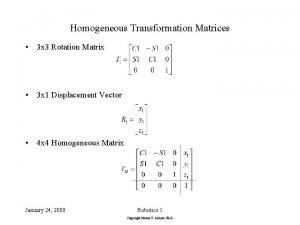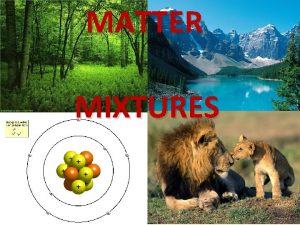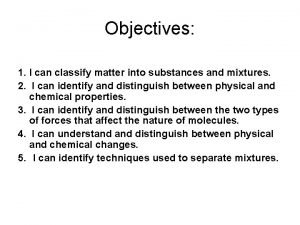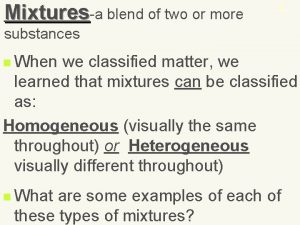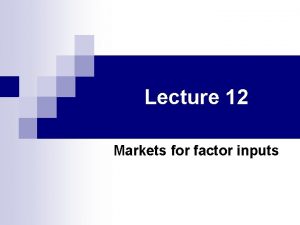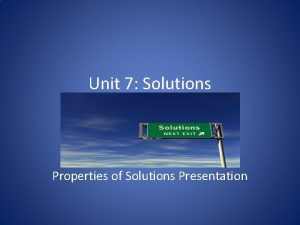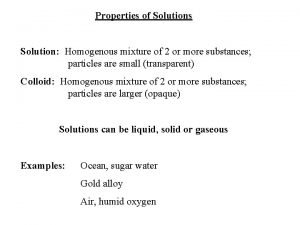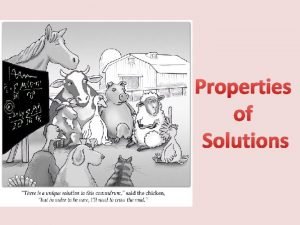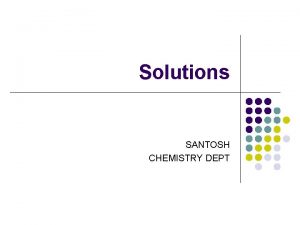Unit 7 Solutions Properties of Solutions Presentation Homogenous













- Slides: 13

Unit 7: Solutions Properties of Solutions Presentation


Homogenous Solution/Mixture Formed by a physical change All solutions are homogenous mixtures Uniform mixture of substances Cannot tell that it is a mixture of two or more substances (can’t see the parts) • Cannot separate by filtration • Must use other means • Designated as aqueous Na. Cl(aq) • •


Heterogeneous Mixture • • • NOT A SOLUTION!!!! Physical blend of two or more substances Clearly a mixture You can see the parts Can use filtration or other means to separate


5 Characteristics of Solutions • • • 1. Homogeneous 2. Clear (do not disperse light) 3. Can have color (with a transition metal) 4. Do not settle upon standing 5. Will always pass through a filter


Solute Vs. Solvent • 1. Solute- substance that is dissolved when creating a solution • 2. Solvent- substance that does the dissolving when preparing a solution

Like Dissolves Like 3 conditions exist for solution formation 1. Ionic solute with polar solvent (water) 2. Polar solute with polar solvent (water) 3. Non-polar solute with non-polar solvent (acetone) 4. All other combinations will not work when creating a solution because of lack of particle attractions


Factors Affecting Solution Formation • 1. Type of solute/solvent (must be compatible) • 2. Temperature – High temperature favors dissolving of solids and liquids – Low temperature does not (not enough energy) – Gases will favor opposite conditions (low temperature is good but high is bad) 3. Agitation-stirring brings together solute and solvent

Continued 4. Particle Size: Small particles are better because this increases surface area 5. Concentration: Need to make sure that you have enough solvent 6. Pressure: GASES ONLY!!!!!!!!!!! High pressure and low temperature makes gases most soluble Low pressure and high temperature makes gases not soluble


